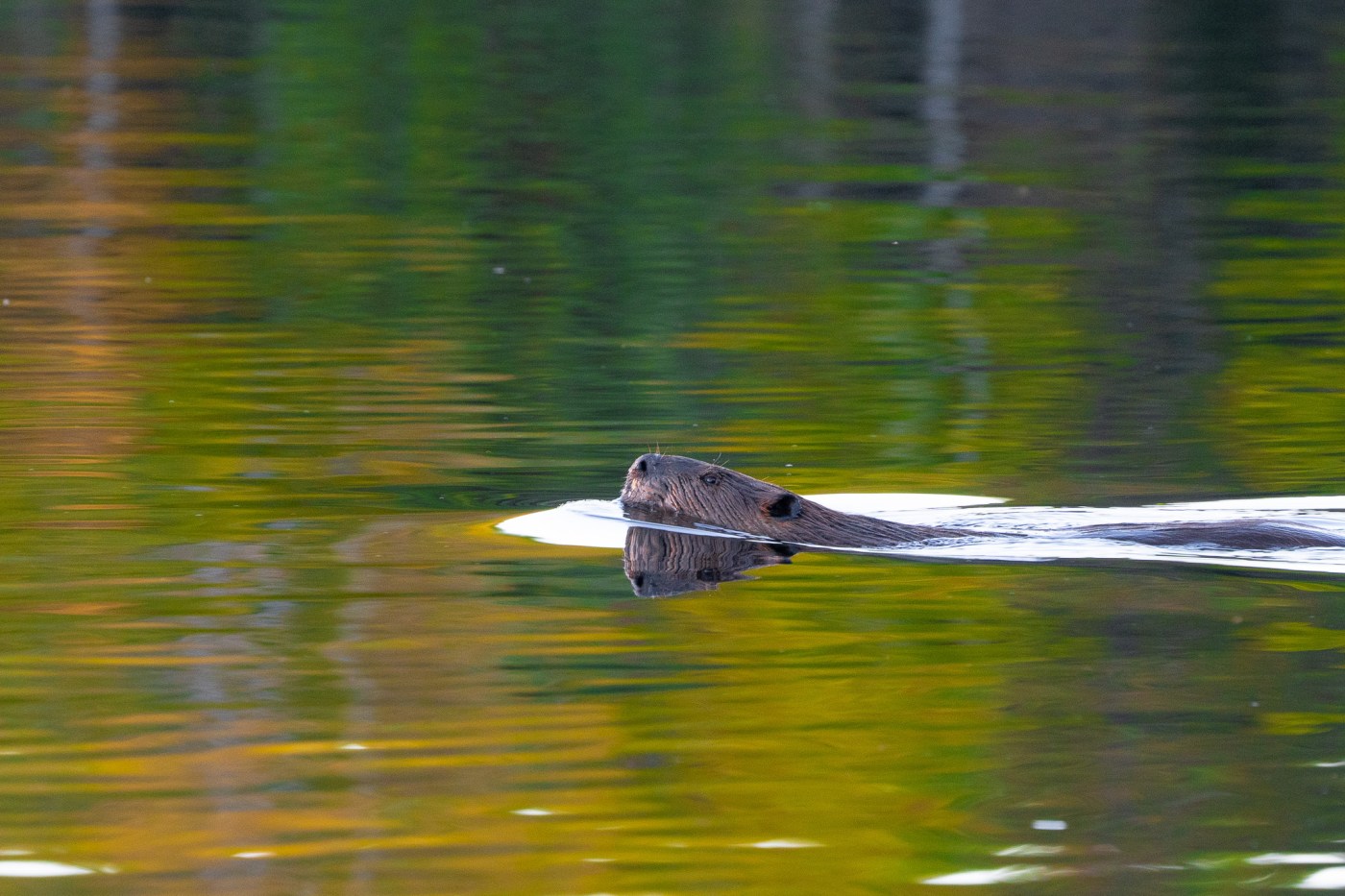
Leave it to Minnesota beavers? Not if you’re a wolf.
Beavers are influential. By cutting trees and damming streams, these rodents change the world around them, raising water levels and creating habitats for diverse plants, insects, fish and more. They are some of the world’s best-known ecosystem engineers, a term for species that produce outsize effects on their environments.
Wolves are powerful. As apex predators, their facility at killing reverberates down the food web, and their direct effect on prey species may affect vegetation, other animals and even how streams flow.
So what happens when an apex predator meets — and eats — an ecosystem engineer? This clash-of-titans question underlies a study published Wednesday in Proceedings of the Royal Society B that investigated how wolves affect beaver activity, and thus forest composition, in Voyageurs National Park in northern Minnesota.
The study found that wolves attack beavers that strike out farther from their homes; thus they limit the extent to which beavers can down trees and transform a landscape. (A previous study by many of the same authors showed that wolves also prevent wetland creation by killing beavers.)
As these toothy engineers pursue their projects, the wolves are “like permitters, in some sense,” said Thomas Gable, project lead for the Voyageurs Wolf Project and an author of both papers. “They’re like, ‘Nope.’”
A photo provided by Tom Gable shows a ring of conifers around a beaver pond in Voyageurs National Park in Minnesota. Beavers change the tree composition near their ponds. (Tom Gable via The New York Times)
When left alone, the beavers of Voyageurs are quite busy. Adults spend their nights venturing into the forest to cut wood, which they haul back to their colonies’ lodge-dam complexes for food and for use in construction and repairs. In the process, the beavers create their own logging trails, which extend from the central pond like spokes from a wheel’s hub.
In camera trap footage, a well-traveled trail looks like “a little beaver conveyor belt,” with the foragers making trip after trip, Gable said. Over time, the beavers’ appetite for deciduous trees can eliminate species like aspens near their homes, leaving a conifer buffer that resembles an evergreen collar around the pond when viewed from above.
But on some of these journeys, danger lurks. In spring and summer, the wolves of Voyageurs lie in ambush along these trails, catching a lot of foraging beavers. In 2018, Gable noticed that the wolves seemed to have done more beaver-hunting on trails that extended farther from ponds, suggesting that they might have been hemming in the beavers and their activity, he said.
Following this hunch, Gable and his colleagues spent years going to places where GPS-tagged wolves had spent 20 minutes or more, and doing forensic sweeps for beaver bits. (While beavers grow close in size to wolves and may be able to escape back to water, when a wolf wins an encounter, there’s often not much left behind.) They came away with data describing hundreds of kills and attempted ambushes, and the lengths of the trails on which they took place.
When they compared these wolf-laden trails with the area’s complete beaver trail network, they found that wolves were indeed hunting more on the longer trails.
In spring, when these effects were most pronounced, the median trail where a kill took place was 57 feet longer than the median beaver trail overall. Assuming that beavers would regularly push that much farther out without wolves present, then wolves are preventing beavers from sculpting up to 18 square miles of forest within the park, although that figure is simply an estimate meant to illustrate the concept, Gable said.
A photo provided by Tom Gable shows a wolf that was collared in spring 2021 just south of Voyageurs National Park, in Minnesota. A new study investigating how the two species relate found that wolves attack beavers that strike out farther from their homes, and thus they limit the extent to which beavers can down trees and transform a landscape. (Tom Gable via The New York Times)
The paper provides a “solid, robust” underpinning for the intuitive idea that beavers stick close to water for safety reasons, said Emily Fairfax, who is an ecohydrologist at the University of Minnesota and was not involved in the study.
She added that wolves can actually help beavers by eating large grazers like elk and moose, which, when unchecked, can degrade beaver habitats. For instance, the return of wolves to Yellowstone has meant that “beavers can thrive again,” she said.
To conclusively assert that wolves or even beavers are shaping a certain quantity of forest would require considering a broader cast of characters, as there are “all sorts of other influences” in forest dynamics, said Clive Jones, an emeritus senior scientist at the Cary Institute of Ecosystem Studies in Millbrook, New York. He was not involved in this study but introduced the concept of ecosystem engineers in the 1990s with his collaborators. He said that the Voyageurs paper had raised interesting possibilities and hoped it would “catalyze a lot more studies.”
Even if the specific extent of wolves’ influence has not yet been pinpointed, examining this power struggle has been illuminating.
“Beavers are these amazing agents of change,” Gable said. “And then wolves play another important role.”
Related Articles
U.S. childhood vaccination exemptions reach their highest level ever
Hollywood’s strikes are both now over as actors reach deal with studios, return to work with writers
Funeral home stored bodies for 4 years, deceived families about loved ones’ ashes, prosecutors say
Feds: 3M worker’s death in Wisconsin preventable
The Supreme Court seems likely to preserve a gun law that protects domestic violence victims

